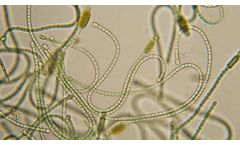Refine by
Liver Disease Articles & Analysis
42 articles found
Non-alcoholic fatty liver disease (NAFLD) has emerged as a significant public health concern, associated with obesity, insulin resistance, and a spectrum of metabolic disorders. ...
Cyanotoxins are toxic substances produced by cyanobacteria, or blue-green algae, which can proliferate in water bodies under conditions like high nutrient levels and warm temperatures. There are over 1,118 different cyanotoxins identified globally in freshwater environments across 66 countries, illustrating the widespread nature of this ...
Individuals with reduced bile production or impaired bile flow, such as those with gallbladder disease or liver dysfunction, may benefit from supplementation with ox bile extract powder to improve fat digestion and absorption, potentially alleviating symptoms related to malabsorption and steatorrhea. Additionally, by promoting the excretion of cholesterol, ox ...
Dysbiosis of the intestinal flora is associated with a variety of human metabolic diseases, such as obesity, diabetes mellitus, and nonalcoholic fatty liver disease. ...
Dysbiosis, an imbalance in gut microbial communities, has been linked to altered bile acid metabolism and, consequently, to diseases like non-alcoholic fatty liver disease (NAFLD) and type 2 diabetes. ...
GalNAc can bind to the highly expressed sialic acid receptors in the liver and guide the siRNA bound to itself into liver cells, which has good application potential in treating liver-targeted diseases. ...
AMPK can stop the metabolism of rapid tumor proliferation as well as restore the normal function of liver and other tissues in diabetic patients is a hot topic in disease research. ...
Vaccines are considered one of the most successful medical interventions in the past few centuries, aiming to harness the human immune system and generate lasting protection against specific diseases. Traditional vaccines rely on the use of inactivated pathogens to trigger an immune response. ...
Their immune-modulatory abilities make them a sought-after tool in treating autoimmune diseases, while their differentiation potential is harnessed for tissue repair and regeneration. In a clinical context, MSCs are instrumental in treating osteoarthritis, inflammatory bowel disease, graft-versus-host disease, myocardial infarction, and more. ...
Osteoporosis is a type of disease that is difficult to cure. According to the etiology, it can be divided into primary osteoporosis, secondary osteoporosis and idiopathic osteoporosis. ...
These enzymes are often elevated in the blood of patients with infectious or inflammatory diseases and are used as indicators of disease severity. Enzymes that are specific to the disease itself are often used to diagnose and monitor cancer, heart disease, and liver disease. ...
Other fresh frozen plasma uses include:Treating multiple factory deficiency (caused by liver disease) Treating antithrombin (III) deficiency Plasma exchange in patients with Thrombotic Thrombocytopenic Purpura (TTP) Emergency reversal of warfarin in patients with bleeding or if they need surgery (if vitamin K treatment is unavailable or would take too long)Fresh ...
These tests are highly sensitive and can detect even small amounts of enzymes, which can be indicative of a disease or condition. For example, elevated levels of the enzyme creatine kinase can indicate muscle damage, while increased levels of the enzyme alanine aminotransferase (ALT) can be indicative of liver disease. ...
However, compared with the classic uric acid-lowering drugs, its effect is relatively weak, so it is more promising to be used in patients with asymptomatic hyperuricemia or diabetes complicated with hyperuricemia. 6. Liver protection SGLT2 inhibitors can protect the liver by altering the glucose-fatty acid cycle, increasing the utilization and oxidation of fatty ...
Biliary disease is a term used to describe diseases that affect the biliary system, which can result in inflammation, fibrosis, bile duct destruction, and eventually liver failure. ...
Introduction Metabolic syndrome (MetS) is a group of clinical conditions manifested as abdominal obesity, hyperglycemia, hypertension, dyslipidemia, and chronic inflammation, concurrently leading to a marked increase in the risk of heart disease, diabetes, and stroke, or all three (1, 2). Currently, MetS is a growing health concern due to its increasing prevalence globally (3). ...
In medicine, taking a holistic approach means treating the whole person - body, mind, spirit, and emotions - to achieve one’s optimal health and wellness. For example, if a patient comes in with a sharp, jabbing pain in his hand - a symptom of peripheral neuropathy - a holistic treatment plan may not only include pain relief medicine but also address underlying causes of pain. A holistic ...
Also, the liver can excrete waste from your blood via bile. But, this liver is subject to a number of diseases which might require a liver transplant. Such diseases are acute hepatitis, chronic hepatitis, etc. Apart from these, liver cancer and cirrhosis of liver also require ...
No parent wants to hear their child has a condition that might affect their education, family life, and overall well-being. Unfortunately, there’s currently no restorative treatment for short bowel syndrome (SBS). Monitoring nutrition is a lifelong necessity for anyone with this disorder. This means that no matter the cause of SBS, there are certain things you should know about nutrition ...
After you eat, your pancreas produces the hormone insulin that sends any extra sugars to your liver in the form of glycogen. The pancreas can also produce the hormone glucagon which can raise blood glucose levels by signaling the liver to turn the glycogen back into glucose and send it back to the bloodstream. These two hormones in the pancreas work in tandem to ...














